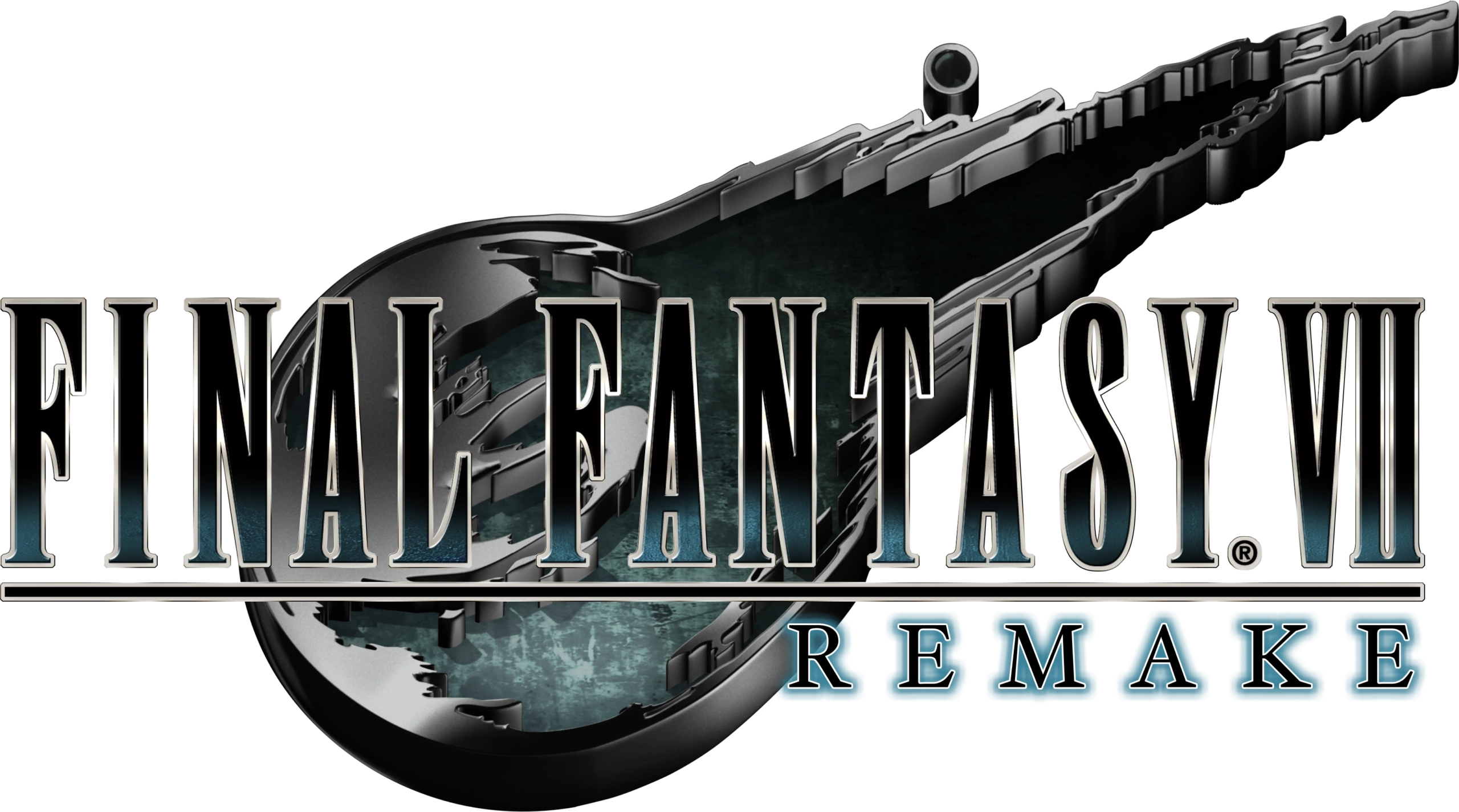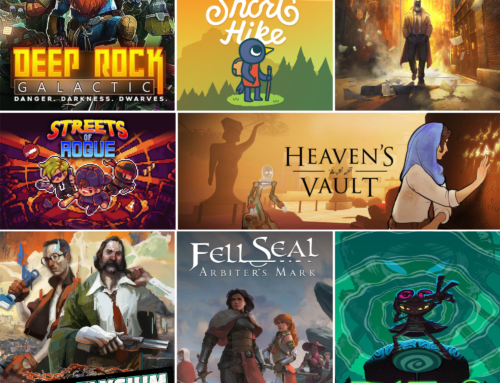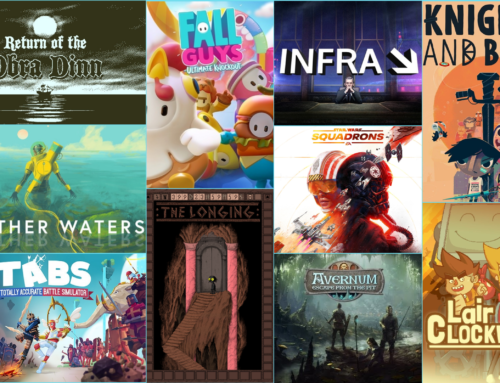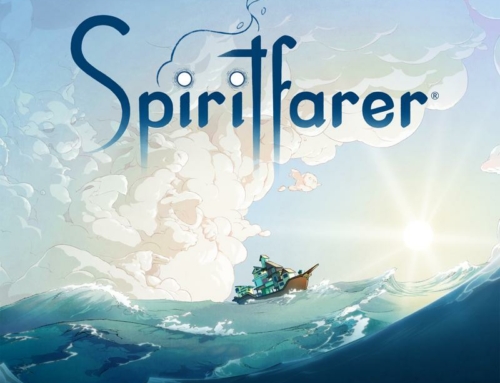Let’s get this out of the way: Final Fantasy VII Remake is the most artless title of any video game I have ever played. Even if they didn’t want to give it a proper subtitle, it should have been Final Fantasy VII Remade. Remake’s the sort of slapdash descriptor you apply before there’s an actual title, and I am just continually boggled by the terrible titles Square Enix comes up with for their games (this is sometimes explained as “English is their second language,” but that’s only an explanation if you aren’t an international corporation with access to tons of native English speakers who can tell you how a title reads outside Japan). [1]
But if the title is both dumb and obvious, the game is anything but; it is simultaneously operatic and subtle, straightforward and complex. It’s a hyper-faithful love-letter to Final Fantasy VII, except for when it decides to be a different game entirely. In some ways, it’s a work substantially compromised both by the constraints placed on it (more of that below), but overall, FF7 Remake exceeded my expectations, and I thoroughly enjoyed about 85% of my time with it. I’d definitely recommend it to fans of the original, though I think it works less well as a stand-alone title for newcomers (if they aren’t opposed to traditional JRPG combat, I’d recommend they just play the original first, possibly with a translation patch). That’s the short version; read on for my exploration of why Remake makes the choices it does, and why they work (or don’t), which is long-winded and full of padding, much like Remake itself.
After accidentally (?) stoking fan demand for a high-res remake of Final Fantasy VII with a 2005 PS3 “tech demo” showcasing what FF7 might look like on the PS3, Square was faced with a problem. Final Fantasy creator Hironobu Sakaguchi had always been opposed to milking prior Final Fantasies with sequels and spin-offs, but this prohibition ended with his resignation in 2001 [2], and Square moved ahead with FF7 spinoff games and films (which were mostly bad, sadly).
No, Square would have loved nothing more than to sell Final Fantasy VII all over again. What was stopping them from producing a full-fledged remake was the peculiarities of Final Fantasy VII’s structure. Every Final Fantasy since the original had been a globe-trotting adventure, but these were just simply-drawn towns, with somewhat more elaborate dungeons; most were interchangeable, and the games were notable for their combat design, their wonderful art and music, and for the relative narrative ambition of their simple stories.
By contrast, VII wasn’t just more narratively ambitious than any title prior to VI, it also ensured that each and every stop along the way was its own vibrant location, complete with its own narrative arc and often with substantially varied gameplay and minigames. Final Fantasy VII was released at an unusual moment in the history of video games, when 3D graphics were advanced enough that the developers could now include chocobo racing, motorcycle combat, and submarine captaining in a single title, but the level of graphical abstraction was such that the art required could be produced relatively quickly,, with only a limited number of 3D models moving on pre-rendered backgrounds. Fade-to-black loading transitions could abstract the connections between places, allowing developers to paint a picture of a large town with only a few small screens. The result is that there’s no good way to “compress” FF7; almost every location is iconic in its own right. At the same time, the demands of photorealistic graphics and fully modeled spaces, fully contiguous with each other, is enormous. Final Fantasy VII was made, from start to finish, in just over a year; a full-fledged remake would likely take a decade or more, at a cost that might bankrupt Square before it could ever be released. And yet the fan demand did not abate in light of these obstacles, and eventually the creative principles of the original game (minus Sakaguchi) decided that they’d better give it a shot before they all retired.
Given these constraints, I think breaking a remake into multiple parts was inevitable; the question is merely where to stop part 1. Midgar was the natural answer; the Midgar section of the original game was practically a game unto itself, with a full narrative arc and a climatic finale that made 13-year-old-me figure that I was at the game’s end; escaping Midgar only to enter the world map for the first time, and find that the game has only just now opened up, is one of the original’s greatest flourishes.
The problem is that Midgar is about 20% of the original game, playtime-wise (even if it’s about a quarter of the script); this is not going to be a full-length game, so an episodic release makes sense. And that was Square’s original intent, but for whatever reason, those plans fell away in development: FF7 Remake was going to be a full-priced release. Even expanding the Midgar section to twice its run time, you’d end up with a 15 hour game, a tough sell at $60 for the RPG crowd. So as released, a first playthrough of Remake will typically take between 35-40 hours; shorter than the original, but not by a lot.
Spoilers from here on in!
This gives the game more than enough time to not only flesh out the core cast and Midgar as a space, but also side characters from the original Midgar arc, notably the other members of Avalanche. This is almost entirely a good thing: characterization is where the original Final Fantasy VII excelled, with a sometimes obtuse and meandering plot forgivable because the nine members of the party were such pleasures to be around: while some had more depth than others, each had evocative character designs and a genuine psychological interiority that was rare in video games of the time. This was the area I was most concerned about with Remake – the median quality of dialog in recent Square games has been pretty bad – but this game does an excellent job. We spend a lot of time with Cloud, Barret, Aerith, and Tifa, and I never tired of any of them. Cloud – essentially a cipher for the entire Midgar arc of the original – is fleshed out by moving some of his later-game plot forward via regular brief flashbacks, leaning into his dry sense of humor, and giving him just a *little* bit of self-awareness. Barrett was always a lovable but “problematic” character, insofar as he’s often a blaxploitation-level caricature of a Black man, and rather than trying to correct this by making him a different character entirely, the writers just try to make the best Barrett they can, emphasizing his passion for his cause, his devotion to his daughter, and his love of a good fight. Tifa’s role as a mother figure who holds everything together is preserved, but we see a lot more of her internal conflict, how ends-justifies-the-means terrorism really isn’t in her nature (even if the ends are good) and how she feels trapped by her need to support the people around her.
But Aerith benefits the most from the additional character work. This surprises me; I think the less-is-more approach to her character in the original is absolutely key to her character arc, and the sense that we were only just getting to know this young woman, full of mystery, is what makes her death so tragic. The developers manage to expand on that, giving us more of the playful, impish, but fundamentally kind Aerith we know, while subtly exploring her more mystical aspects, including a certain level of precognition that wasn’t fully apparent in the original game.
The one real failing here is a predictable one: Sephiroth, never once directly encountered in the entire Midgar arc, shows up early, and is overused, despite relatively limited screen time. Sephiroth was an effective villain in the original precisely because the protagonists were always in his wake, encountering the problems he created, but only directly facing him towards the end of the game. This is good, because Sephiroth has great visual design and music, but isn’t very well developed as an actual character; his motives aren’t particularly cogent, and a lot of what he does gets handwaved because he’s “insane.” Advent Children et.al doubly downing on Sephiroth Fan Service rather than leaving him dead is the single-biggest mistake of the Compilation of FF7, and while his use here is more restrained, it’s still too much, particularly since people who haven’t played the original won’t even understand who this guy is or why Cloud hates him.
I’ve spent so much time talking about the character work not just because it’s the game at its best, but because it dominates the game; up until its final moments, the actual plot isn’t substantially expanded from the original Midgar arc, meaning that there isn’t a lot to it. So in order to hit its 35 hour running time, Remake includes padding. A LOT of padding.I’d estimate that the ‘core game’ makes up maybe 20 hours of VII Remake, and that’s already including various aspects of the main story that are inherently discursive (e.g. Wall Market). The rest is stretching what were single-screen combat areas of the original into lengthy, meandering ‘dungeons.’ The Train Graveyard takes maybe 10 minutes to cross in the original; here, it’s a full hour and a half.
By and large, these areas are competently done, and give space for the game’s excellent combat engine (more on that in a bit) to shine, but they bring the game’s already slow narrative to a screeching halt. I didn’t mind them, and they do give space for some nice banter and exploration of the ‘spaces between’ the iconic locations, but the result is that Remake often feels like a watered-down game. Worse, these often appear at the worst time; the Train Graveyard sequence shows up when the characters are racing to avert the Sector 7 collapse, and absolutely kills the narrative momentum that entails. Likewise, the explosive climax at the Shinra building is ground to a halt by a lengthy, unnecessary sequence where Hojo forces the party to navigate his lab and fight a bunch of different monsters. There’s a reason these sequences weren’t in the original.
The other form of padding is by adding hub areas with sidequests. Most of the time, the game is linear, with Cloud and his current companion(s) having to beeline through an area for plot reasons. But at regular intervals, Cloud is told to kill time and wander around an area of the Midgar undercity, doing sidequests.
I appreciated the lulls this provided, the opportunity to really breathe in this richly modeled world, listen to a jukebox, and engage in some low-key questing. Both the quest design and their narratives are middling; while it (almost) never tells you to just go Kill Ten Rats or Deliver A Package, this is still a linear JRPG, and as such there’s no real decision-making or complexity to the quests; you go to a location, maybe solve an environmental puzzle, and fight some stuff. The characters you meet are exaggeratedly quirky and largely More Anime than the main cast; I neither found them overly obnoxious nor particularly endearing, but YMMV.
Thankfully, doing these quests are definitely not necessary; the game isn’t particularly difficult on Normal difficulty (and I imagine is something of a cakewalk on Easy, though I haven’t tried it) so anyone who doesn’t want to dig into this aspect of the game can safely skip them, unlike the lengthy segments in the sewers or (ugh) Hojo’s lab.
Most of your time in these segments is in combat, and the combat is great. For better or worse, Square abandoned turn-based combat after Final Fantasy XIII (2010), with most of their games building off the “real-time action when menu commands” system pioneered in Kingdom Hearts and Crisis Core. These systems did speed up combat and make the game more in-line with modern sensibilities, but they all too frequently devolved into “mash the X button and one or two button-mapped abilities,” because it’s just inherently difficult to navigate a menu in the chaos of combat.
Remake has an elegant and unexpected solution to this problem: it uses real-time-with-pause, a combat system pioneered by Baldur’s Gate and entirely associated with party-based, isometric western RPGs. At base, Remake is a third-person action game with RPG stats; you control only a single character at a time (defaulting to Cloud at the start of every battle) but can both give commands to and take direct control of each party member. As you battle, you build ATB charges, and at any time you can bring up a small overlaid menu, which automatically pauses combat and lets you use special abilities, cast magic, consume items, etc. It sounds clunky on paper, but in practice it’s surprisingly natural. You can also bind your most-used abilities to macros, meaning you don’t even have to bring up the menu for trash mob fights if you don’t want to.
The materia system is back and great as ever, with the classic magic and ability materia supplemented by all sorts of new ones. Materia levels and unlocks new abilities as you use it, and you’ll always find yourself with more usable materia than there are materia slots, allowing for varied builds and forcing difficult decisions. If a few parts are undercooked (there’s little worth stealing with Steal materia, and the Enemy Skill materia allows for a whopping total of four skills to be learned), it’s only because the buffet of options is so large.
Finally, each weapon also levels up; rather than just discarding your old weapon every time you buy a new one, each weapon now has its own skill tree and playstyle, and there’s a system that rewards you for using different weapons to unlock their linked abilities. The net result is that there’s actually significantly more character customization in Remake than there was in the original, and there’s some nice extrinsic rewards to give tangible progress after each fight.
Everything I’ve written applies to about 95% of Remake. In its remaining 5%, it departs substantially from the original in ways that are daring and imaginative, but also simultaneously subtle and obvious, clever and stupid.
In short: mysterious phantoms appear early in the story, alternatively harming and helping our characters, blocking them from accessing certain areas and generally interfering with their business. Having recently played a lot of games with metanarrative and watched Twin Peaks: The Return, a followup to a beloved television series that is, more than anything, about making a followup to a beloved work, I pretty quickly noticed a pattern: the phantoms interfere anytime the characters begin to depart from the continuity of the original Final Fantasy VII, or do anything that would irreversibly send the plot off the rails.
I thoroughly enjoyed this; the actions of the spirits are obvious but their motives – and the meanings behind them – are not, and it invites thoughtful speculation. Do the spirits represent the fans, demanding a faithful remake? The developers, anxious about how the small changes they are making will create a butterfly effect that negates any attempts to follow the original plot?
These playful hints of metanarrative are brought crashing to earth in the game’s final moments. A lot happens, but in short, the characters are given visions of the predestined future (Aerith dying, Meteor destroying Midgar) and given an opportunity (by Sephiroth!) to enter a portal and battle for free will. This is a hugely important decision, and the game rushes it; given that everyone agrees that Sephiroth is a terrible dude with his own agenda, they must know that entering the portal only serves his own ends, but they do it anyway. At which point they enter an alternate realm, and engage in a truly ludicrous series of boss fight against extraplanar entities with Latin names [3] responsible for forcing them to reenact the original FF7’s plot. They kill those guys, and leave Midgar, for what the game overtly tells us is uncharted waters.
I have mixed feelings. I think that remakes SHOULD chart their own path; any remake that just emulates the original is an artistically bankrupt endeavor, at best a form of craftsmanship to make an older work more accessible to a modern audience, but usually a crass, commercial endeavor. And Final Fantasy has always been operatic, with VII and VIII in particular embracing such devices as unreliable narrators and alternate timelines; in that context, this leap isn’t wholly radical. More importantly, the possibility for something new and good is exciting!
But given project co-director Nomura’s reputation for increasingly convoluted and ungrounded storytelling, this also runs the risk of creating bad fan fiction that doesn’t capture any of what made the original great, a narrative mess where every returning character and location is treated as a cameo in its own story, full of what-if possibilities.
We won’t know until Part 2 (and maybe even Part 3) is out, and it matters not just for those future games but for Remake itself; this is an incomplete story, and as such can’t be fully recommended as a stand-alone game; this is why I say it’s really for fans of the original. So I’m left with a mix of excitement and trepidation, which I suppose is exactly what free will and an unknown future is supposed to leave you with.
But even if the follow-ups are terrible, I’ll still be delighted that Remake got made, because it has brought with it a stunning 12 discs of music, and it’s a tour-de-force. Going in, I expected fairly faithful covers of the original’s music with modern samples, maybe some orchestral arrangements; and while there is a bit of that, you just as often get wild, genre-shifted reinterpretations alongside genuinely great new music. The original Wall Market theme is shifted into a techno-reggae [4]track so perfectly realized that I now have trouble recalling the original, and used as music for a different section; meanwhile, Wall Market proper has a great new composition, presented as four different arrangements that play depending on which section you’re currently in. The entire project is indulgent and expensive, but of such uniformly high quality that it’s fully justified. I have listened to literally hundreds of remixes of Uematsu’s work, and Remake contains some of the best I’ve heard.
All of which is to say: Final Fantasy VII Remake is an odd game, full of contradictions, but more interesting than anyone could have reasonably expected, and I enjoyed my time with it quite a lot.
- [1] The title is also misleading, insofar as it’s only a remake of the first ~20% of the original Final Fantasy VII; those of us who regularly read gaming news were well aware going in, but plenty of people not in the loop who just saw it in the store/on Amazon felt tricked, and rightly so; there’s no reason not to put a “Part One” on here except to trick people.↩
- [2]Caused by the massive financial failure of Final Fantasy: The Spirits Within, the CGI film he’d been working on since FF7’s release, which entailed building an expensive Hawaii movie studio from scratch↩
- [3]Sometime around Final Fantasy XII, Square discovered Latin and has used it in increasing amounts of every game since, and I cannot figure out what on earth they do this, other than some vague sense that Latin Is Cool↩
- [4]Look, I’m not a music writer, I’m sure there’s a genre term for this that I don’t know, please don’t yell at me ↩





Leave A Comment